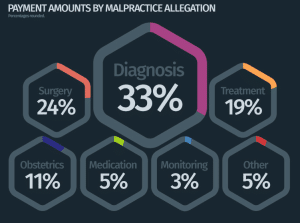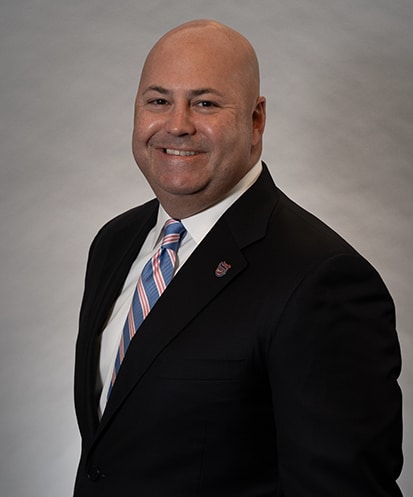Common Reasons Doctors are Sued for Medical Malpractice
 Physicians receive years of training and they devote years to the study and practice of medicine because they understand that human error, when it takes place in a medical setting, can mean the difference between life and death. Every doctor is aware of the lasting consequences of their actions and inaction in the life of their patient, so they must take every precaution to protect their patients.
Physicians receive years of training and they devote years to the study and practice of medicine because they understand that human error, when it takes place in a medical setting, can mean the difference between life and death. Every doctor is aware of the lasting consequences of their actions and inaction in the life of their patient, so they must take every precaution to protect their patients.
In order for a medical mistake to be considered malpractice, the medical professional’s error must have been a breach of the standard of care, the patient must have been injured by the medical error and they must be able to prove that the medical mistake directly caused the injury. According to Diederich Healthcare’s 2015 Medical Malpractice Payout Analysis, these are the types of malpractice allegations that were paid out last year, by percentage:
- Misdiagnosis or failure to diagnose: 33%. This includes misdiagnosis, and delayed diagnosis. If the patient does not receive the proper medical care for their condition, it may become worse and lead to death. According to the Institute of Medicine, most people will experience at least one diagnostic error in their lifetime, sometimes with devastating consequences.
- Surgical errors: 24%. Preventable medical errors such as wrong-site surgery, leaving tools inside of a patient, operating on the wrong patient, anesthesia errors can be the result of many factors including negligence, miscommunication among the medical team, fatigue, or incompetence.
- Treatment errors: 19%. Treatment for a medical condition or injury may include prescribing the appropriate medication, radiation treatments, physical therapy and countless other treatments. When a physician deviates from the standard of care in the treatment of a disease or injury it may result in illness or further injury for the patient.
- Obstetrics errors: 11%. From the failure to perform prenatal tests, failure to monitor pregnancy and delivery, birth injuries such as cerebral palsy or other brain injury, labor and delivery medical negligence pose an enormous risk to both the mother and her baby at what should be a happy time for the family.
- Medication errors: 5%. According to the Institute of Medicine, more than 1.5 million Americans become sickened injured or die because of an error in prescribing, dispensing and taking medications.
- Monitoring patients: 3%. A significant part of a physician’s role is to monitor their patients when they are under anesthesia, when a woman is in labor, when a patient is undergoing surgery or receiving some other medical treatment the doctor or other medical professional must watch for signs of complications.
- Other: 5%. There are many other types of preventable medical errors that can result in serious injury or death of a patient such as inadequate taking of the patient’s medical history, inattentive follow-up, inadequate record keeping and miscommunication or lack of communication among the members of the medical team. (Full medical malpractice payout analysis )
We know that doctors are not infallible and that they do make mistakes. However, not every mistake, unfortunate outcome or post-surgical complication amounts to malpractice. If you feel as if you have been injured, or suffered a harmful side effect caused by the negligent actions or inaction of your doctor or other medical professional, you should speak with an experienced medical malpractice attorney.

Christopher T. Nace works in all practice areas of the firm, including medical malpractice, birth injury, drug and product liability, motor vehicle accidents, wrongful death, and other negligence and personal injury matters.
Read more about Christopher T. Nace.
